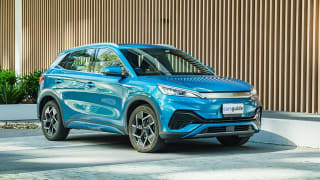GWM does not back away from the premise that value-for-money is a cornerstone of its business plan. In fact, the pricing will probably attract as many would-be buyers as any other element of the Ora’s design or marketing, so the sticker price is a big deal.
The base-model variant of the Ora will carry an MSRP of $43,990 (which will rise when drive-away pricing is revealed).

That gets you the 48kWh battery (for a 320km range) 18-inch alloy wheels, dual 10.25-inch screens, Apple CarPlay and Android Auto, 360-degree surround-view camera, active cruise-control, synthetic leather seat trim, intelligent start (no starter button) and plenty of driver aids (see the Safety section).
The same specification is offered with the long-range battery which extends range to 420km. Equipment levels are identical to the base-model, but the extra battery capacity lifts the MSRP to $47,990.

For those with a little more to spend, there’s also an upmarket variant of the Ora, dubbed Ora GT. At $53,990, it’s a bit pricier than the other Oras, but it does run to some classy gear including a panoramic sunroof, specific 18-inch alloys, different bumpers and grille, a hands-free electric tailgate, a powered driver’s seat with memory, automatic parking and red brake calipers.
More importantly, there’s a little extra power available (GWM hasn’t told us how much more, but figure on a handful of kiloWatts) although that does drop the projected range from 420 to 400km.






















